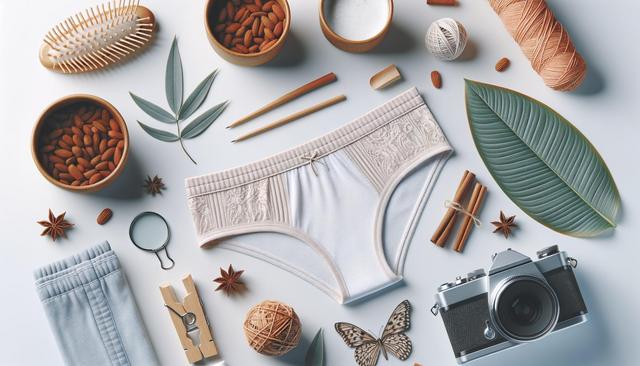The Evolution of Underwear Through Time
Underwear has come a long way from its early forms in ancient civilizations. Historically, it served a basic purpose: to provide protection and hygiene. Over the centuries, styles and materials have evolved to reflect cultural norms, technological advancements, and lifestyle changes. In ancient Egypt, for example, simple linen loincloths were used, while the Middle Ages saw the introduction of more structured garments. By the 19th and 20th centuries, underwear began to take on a more modern form, with innovations in fabrics and tailoring techniques. Today, underwear is not only functional but can also be a reflection of personal style and preference.
Modern innovations have influenced how underwear is designed and manufactured. The introduction of synthetic fibers, such as nylon and elastane, has allowed for more flexibility, moisture-wicking capabilities, and a better fit. This evolution demonstrates how underwear has grown from a necessity into a thoughtfully designed garment that supports both comfort and self-expression.
Types of Underwear and Their Unique Benefits
There are various types of underwear available, each designed to cater to different body types, preferences, and occasions. Choosing the right type can enhance comfort and support throughout the day. Some common types include:
- Briefs: Provide full coverage and are ideal for everyday wear.
- Boxers: Offer a relaxed fit and are often preferred for breathability.
- Boxer briefs: Combine the snug fit of briefs with the length of boxers.
- Thongs: Minimize visible lines under clothing and are often worn with form-fitting outfits.
- Bikinis: Provide moderate coverage with a low-rise fit.
The choice of underwear can also have an impact on posture and movement, especially during physical activities. Sports-specific designs include features like compression, extra support, and moisture control, making them suitable for workouts or athletic performance.
Choosing the Right Material for Your Underwear
Fabric choice is a key consideration when selecting underwear. Different materials offer varying levels of breathability, stretch, and softness. Cotton is one of the most popular options due to its natural feel and good moisture absorption. However, other materials also offer specific benefits:
- Modal: Known for its silky texture and durability.
- Bamboo: Offers antibacterial properties and is environmentally sustainable.
- Microfiber: Lightweight and quick-drying, ideal for activewear.
- Lace and mesh: Often used for aesthetic appeal while maintaining breathability.
Understanding the properties of each fabric helps ensure that underwear meets both comfort and functional needs. It’s also important to consider the season or setting—lighter fabrics are ideal for warmer weather, while thicker materials may provide added warmth during colder months.
How Fit and Size Affect Comfort
Even the most well-designed underwear can become uncomfortable if the fit is wrong. Wearing underwear that is too tight may cause chafing or restrict movement, while overly loose garments may lead to bunching and lack of support. It’s crucial to find the right size and cut that complements your body shape and activity level. Here are a few tips to ensure a good fit:
- Check sizing charts before purchasing, especially when trying new brands or styles.
- Look for features like adjustable waistbands and stretchable fabrics for a more personalized fit.
- Pay attention to how seams and elastic bands interact with your skin to avoid irritation.
Trying different styles and sizes can help identify what works best for your daily routine, whether it’s for work, exercise, or relaxation. Some people may even benefit from having a diverse underwear collection to match their varying needs.
Caring for Your Underwear to Extend Its Lifespan
Proper care can significantly extend the life of your underwear and maintain its comfort and appearance. While it may be tempting to toss all garments into the same laundry cycle, taking a few extra steps can make a difference. Here are some care tips:
- Wash underwear in cold water to preserve elasticity and prevent shrinkage.
- Use a gentle detergent that’s free from harsh chemicals and fragrances.
- Avoid using fabric softeners, which can break down elastic fibers over time.
- Air-dry underwear whenever possible to maintain shape and softness.
Storing underwear properly also helps maintain its condition. Fold items neatly or use drawer organizers to prevent stretching or damage. Rotating your collection regularly ensures even wear and minimizes strain on specific pieces. With consistent care, your underwear will continue to provide the support and comfort you rely on daily.
Conclusion: Making Informed Choices for Everyday Comfort
Underwear is an essential part of daily life, offering both practical support and an opportunity for self-expression. By understanding the different types, materials, and factors that influence comfort and fit, individuals can make more informed choices that suit their lifestyle. Whether you’re prioritizing performance, aesthetics, or sustainability, investing time in selecting and caring for your underwear can lead to greater comfort and confidence throughout the day. Thoughtful selection ensures that this everyday item continues to meet your evolving needs without compromising on quality or personal style.








